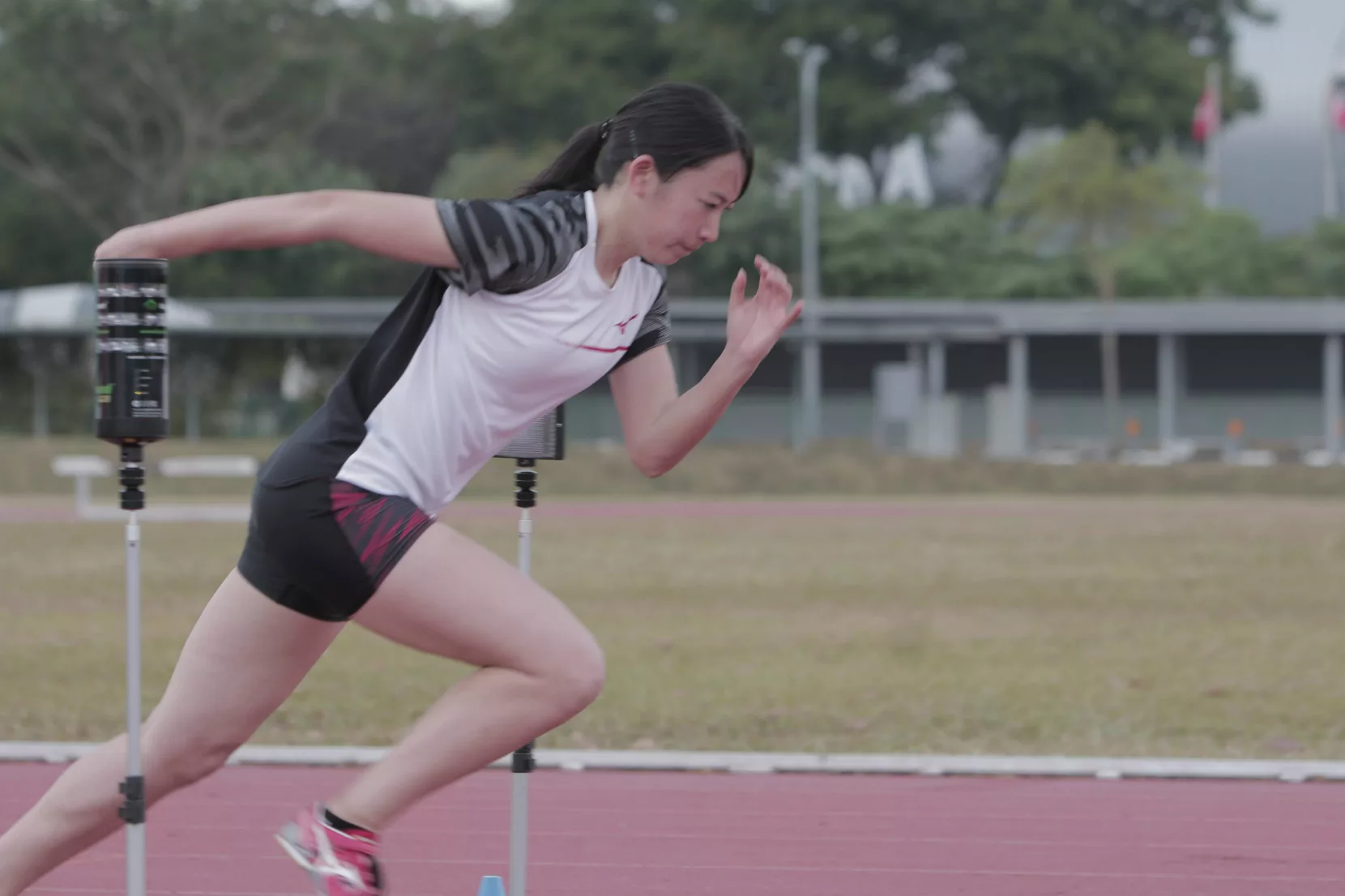Contents of Article
- Summary
- What is the Pro-Agility (5-10-5) Test?
- Who should use the Pro-Agility (5-10-5) Test?
- How do you conduct the Pro-Agility (5-10-5) Test?
- How do you score the Pro-Agility (5-10-5) Test?
- What considerations are there for the Pro-Agility (5-10-5) Test?
- Is the Pro-Agility (5-10-5) Test valid and reliable?
- References
- About the Author
Summary
Used for the NFL and NHL combine testing, and for the SPARQ rating for basketball, hockey and American football, the Pro-Agility (5-10-5) Test is an extremely popular protocol. Despite historic beliefs, this test is not a measure of agility and has instead been deemed an assessment of change of direction speed. However, recent knowledge is now strongly criticising this test’s ability to measure change of direction speed due to the influence of the sprint distances.

What is the Pro-Agility (5-10-5) Test?
The Pro-Agility Test, otherwise known as the 5-10-5 shuttle or the 20-yard shuttle test, was first developed and administered using the protocol outlined by Harmann et al. (2000) (1). It is used as part of the performance testing battery for the US National Football League (NFL) and US National Hockey League (NHL) combine testing, and for the SPARQ rating for baseball, hockey, and American football.
As the pro-agility test is pre-planned and requires no reactive ability, this test is actually a measure of CODs and not agility (2). Given this, perhaps the name ’5-10-5 shuttle test’ is preferable as this is less misleading and more appropriate.
Click here for more information regarding the difference between agility and CODs.
Who should use the Pro-Agility (5-10-5) Test?
As direction changes are so common in many sports, identifying an athlete’s ability to change direction can be a valuable asset in improving their athleticism (3). Sports that include any form of rapid directional changes and short-distance accelerations may benefit from including the Pro-Agility test in their fitness testing battery.
How do you conduct the Pro-Agility (5-10-5) Test?
It is important to understand that whenever fitness testing is performed, it must be done so in a consistent environment (e.g. facility) so it is protected from varying weather types, and with a dependable surface that is not affected by wet or slippery conditions. If the environment is not consistent, the reliability of repeated tests at later dates can be substantially hindered and result in worthless data.
Required Equipment
Before the start of the test, it is important to ensure you have the following items:
- Reliable and consistent testing facility of at least 15m in length (e.g. indoor hall or artificial sports field).
- Test administrators (minimum of three if using a stopwatch).
- Timing gates (preferred, but not essential)
- Measuring tape (≥ 10m)
- Stopwatch
- Marker Cones
- Performance recording sheet
Test Configuration
Figure 1 displays the test configuration for the test. This setup must be adhered to if accurate and reliable data is desired.
Important information for using timing gates
The height of the timing gates has also been proven to significantly affect the performance results (4). When testing, it is therefore imperative a standardised, consistent protocol is used to reduce variances within the data. For example, it may be suggested that the gates are always set at a consistent height of 1m.
Test Procedure
Warm-up
- Participants should thoroughly warm up prior to the commencement of the test. Warm-ups should correspond to the biomechanical and physiological nature of the test. In addition, sufficient recovery (e.g. 3-5 minutes) should be administered following the warm-up and prior to the commencement of the test.
Starting the test
- Participant readies themselves in a 3-point position on the start-line with feet shoulder-width apart and placed equally on either side of the line. The hand in contact with the floor during the 3-point position determines which direction the athlete should travel. For example, if the participant is going right, then they must start with their right hand on the start line.
- The athlete should also be instructed that once they reach the turn-around line, they MUST touch the line with their lead foot and hand. The opposite hand (inside hand) MUST not touch the floor during the change of direction.
- Participants should be counted down ‘3 – 2 – 1 – GO ‘.
- If the test administrators are using a stopwatch, then the timekeeper must stand at the finish line and perform the countdown and time the sprint. The other two test administrators must be positioned on the turnaround lines to officiate the performance and ensure the athlete’s foot and hand touches the line.
- On the ‘GO’ signal the participant must accelerate maximally to the first line, then change direction and accelerate to the opposite line, before again changing direction and accelerating through the finish gate.
- Each participant MUST complete a MINIMUM OF THREE EFFORTS in each direction, and each effort must be separated by a 2-3 minute rest if reliable results are desired.
After the test
- Once the test is over, some subjects may react to the previous exertion. To reduce any problems, the subjects should rest, either sitting or standing, for at least 2-3 minutes. If the subject feels ill or goes quiet or pale, they should lie down with their feet resting on a chair. Note: never leave the participant alone after the test.
In addition to watching the video, it is important you read the test procedure detailed in the toggle box above.
How do you score the Pro-Agility (5-10-5) Test?
With a minimum of three efforts completed on each leg, the scores are then generated into two mean scores – these provide an overall Pro-Agility score for each direction change. This is done by using the following equation:
- Mean score (seconds) = (#1 effort + #2 effort + #3 effort) ÷ total number of effort (e.g. 3)
What considerations are there for the Pro-Agility (5-10-5) Test?
When conducting the test, there are several factors that need to be taken into consideration before you begin – some being:
- Accuracy of the stopwatch – Though hand-held stopwatches have been proven to be reliable when measuring speed, they are not recommended when high degrees of precision are required (5, 6). If timing gates are not available, then it is imperative that the test administrators understand the inconsistencies of using a stopwatch for their results. As a result, test administrators must pay great attention and attempt to communicate clearly in order to maximise the accuracy of the results.
- Starting stance – Athletes must start from the ‘3-point starting position’, with the feet shoulder-width apart (either side of the line) and the lead hand on the line.
- Height of the timing gates – To the author’s knowledge, only one study to date has assessed the effects of timing gate height on sprint performance (4). The authors measured significant sprint time differences when the gates were set at 60cm and 80cm. However, there is no current research that identifies an optimal height for testing. As a result, it is highly recommended that the test administrators adopted one height (e.g. 1m) and stick to it.
- Circadian rhythms – circadian rhythms have been shown to significantly alter anaerobic performance tests. Current knowledge suggests early morning anaerobic tests will elicit significantly lower peak power values than late afternoon or evening tests (7).
- Surface and Conditions – Before conducting the test, ensure the surface is non-slip and consistent (e.g. not affected by weather). Secondly, ensure the environment/ facility is also consistent and not affected by weather conditions.
- Individual effort – Sub-maximal efforts can result in inaccurate and meaningless scores.
Is the Pro-Agility (5-10-5) Test valid and reliable?
Though this test has been deemed a valid and reliable tool for measuring CODs (3), it is however not a valid test for assessing true agility as it does not measure any form of reactive ability (2). Furthermore, as the pro-agility contains two 5m sprints and one 10m sprint, there is speculation whether this test actually measures CODs, or if there is too much contribution from sprint ability.
To put it simply, because there is an abundance of short-distance sprinting involved in the test, they may not clearly demonstrate an athlete’s ability to change direction quickly. This question was raised by Sayers and Killip (2010) during their investigation into the 5-0-5 Agility Test (2). As a result, whilst the pro-agility test remains a reliable protocol, there is little agreement on its validity to measure CODs.
- Harman E, Garhammer J, Pandorf C. Administration, scoring and interpretation of selected tests. In: Baechle TR, Earle RW, eds. Essentials of strength and conditioning. Champaign, 2000. [Link]
- Sayers, MGL. Influence of test distance on change of direction speed test results. J Strength Cond Res 29(9): 2412–2416, 2015 [PubMed]
- Stewart, A.F., Turner, A.N., & Miller, S.C. (2014). Reliability, factorial validity, and interrelationships of five commonly used change of direction speed tests. Scandinavian Journal of Science and Medicine in Sports. 24, 500-506. [PubMed]
- Cronin, J.B., & Templeton, R.L. (2008). Timing light height affects sprint times. Journal of Strength and Conditioning Research, 22(1), 318-320. [PubMed]
- Hetzler, RK, Stickley, CD, Lundquist, KM, and Kimura, IF. Reliability and accuracy of handheld stopwatches compared with electronic timing in measuring sprint performance. J Strength Cond Res 22(6): 1969–1976, 2008 [PubMed]
- Mayhew, JL, Houser, JJ, Briney, BB, Williams, TB, Piper, FC, and Brechue, WF. Comparison between hand and electronic timing of 40-yd dash performance in college football players. J Strength Cond Res 24(2): 447–451, 2010 [PubMed]
- Teo, W., Newton, M.J., & McGuigan, M.R. (2011). Circadian rhythms in exercise performance: Implications for hormonal and muscular adaptation. Journal of Sports Science and Medicine, 10, 600-606. [PubMed]





